Original author: David C, Bankless
原文翻譯:鄧通,金財經
Investing in stablecoins or Solana’s native liquidity staking token may not be as exciting as searching for the next breakout coin, but it can provide a reliable way to earn money.
Stablecoins provide price stability, while LST allows you to earn base staking rewards while maintaining liquidity. Through DeFi platforms such as Kamino, Drift, and Save (formerly Solend), you can put stablecoins and LST to work and increase your returns through yield farming strategies.
Whether you prefer passive, low-risk returns or are willing to take on higher risk for greater rewards, this article breaks down the best yield opportunities in leading stablecoins like USDC and PYUSD, as well as Solana’s leading LST, to help you find the best match for your risk profile.
USD Stablecoin
Stablecoins on Solana have seen explosive growth in this market cycle. While USDC is dominant on the chain, a unique phenomenon compared to Tether’s USDT, Paypal’s PYUSD has experienced explosive growth following its recent launch, thanks to rewards from DeFi protocols.
These stablecoins offer a relatively low-risk option for yield farming when used in DeFi protocols such as Kamino, Drift, and Save (formerly Solend). Whether you are looking for a steady income or a higher risk-reward option, these assets are essential options for those aiming to hedge against market volatility and earn a steady return.
美國農業部
卡米諾
Kamino Finance offers a variety of yield options for USDC holders, with its main pool vault currently offering an annual interest rate of about 3.5%, which is lower than its historical 6-9% range, but still reliable, and can provide passive, low-risk returns. For higher returns, Kaminos altcoin pool offers an annual interest rate of about 7.5% on USDC, and the JLP (Jupiter Liquidity Provider) pool offers an annual interest rate of about 6.6%. Its centralized liquidity strategy makes it an ideal choice for users who want to balance risk and higher returns.

Drift
Trading protocol Drift also allows users to earn yield by lending USDC. While yields here are modest, around 3-4%, well below previous highs, they offer a stable, low-risk opportunity for those who are not seeking aggressive risk. Additionally, Drift’s insurance fund offers much higher yields, currently around 15%, from fee income from trading, borrowing, and liquidation, but is riskier because it acts as a backstop for the protocol to remain solvent.
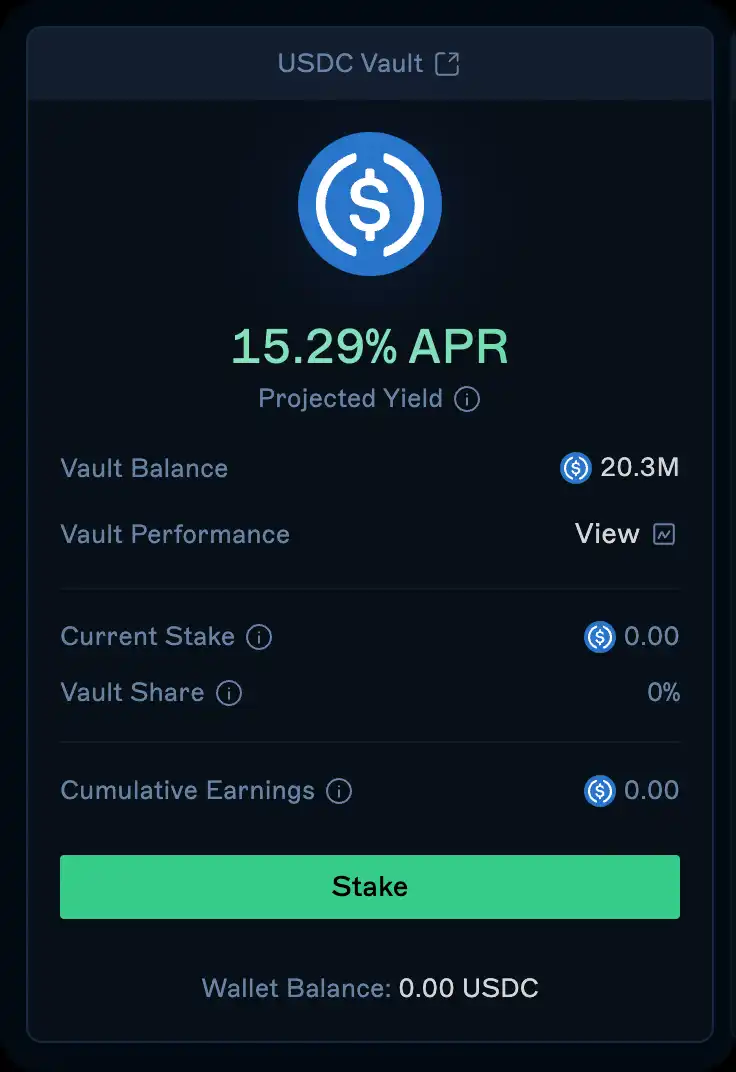
Save
Algorithmic lending platform Save offers 4-5% APY on USDC lending in its main pool. The platform also has other permissionless pools that are not deployed by the protocol, such as its JLP/SOL/USDC pool, which currently offers an APY of 8.5% for those willing to participate in riskier liquidity strategies.
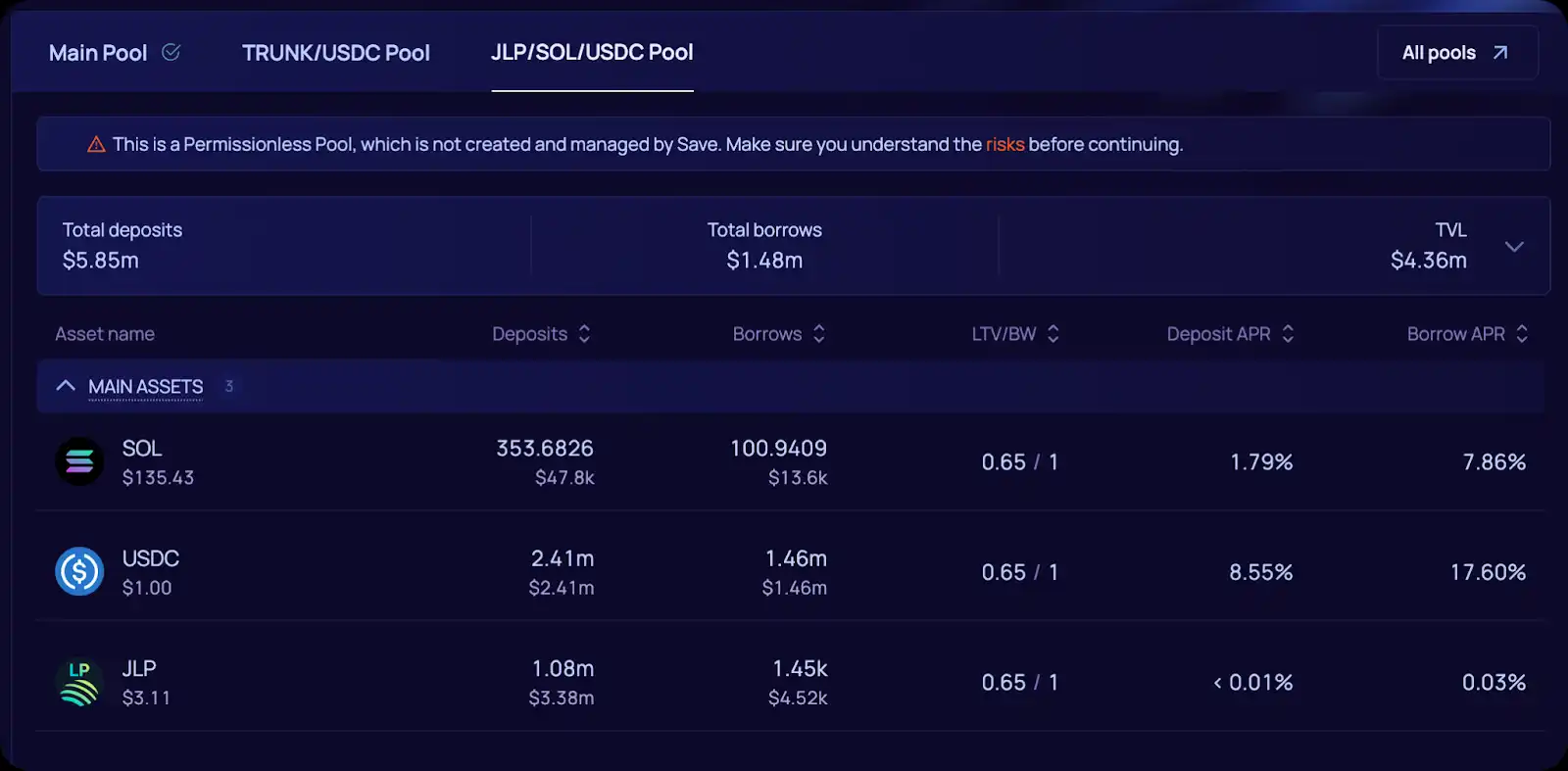
PY美元
卡米諾
PYUSD is a new entrant into the Solana ecosystem, but it has quickly gained momentum thanks to Kamino’s aggressive yield strategy. While the initial yield was as high as 30%, it has since stabilized at around 7%, the highest of the Kamino main pool stablecoins. Kamino has also just added PYUSD to the JLP (Jupiter Liquidity Provider) pool, which has a higher yield than its main treasury, at around 8.5%.
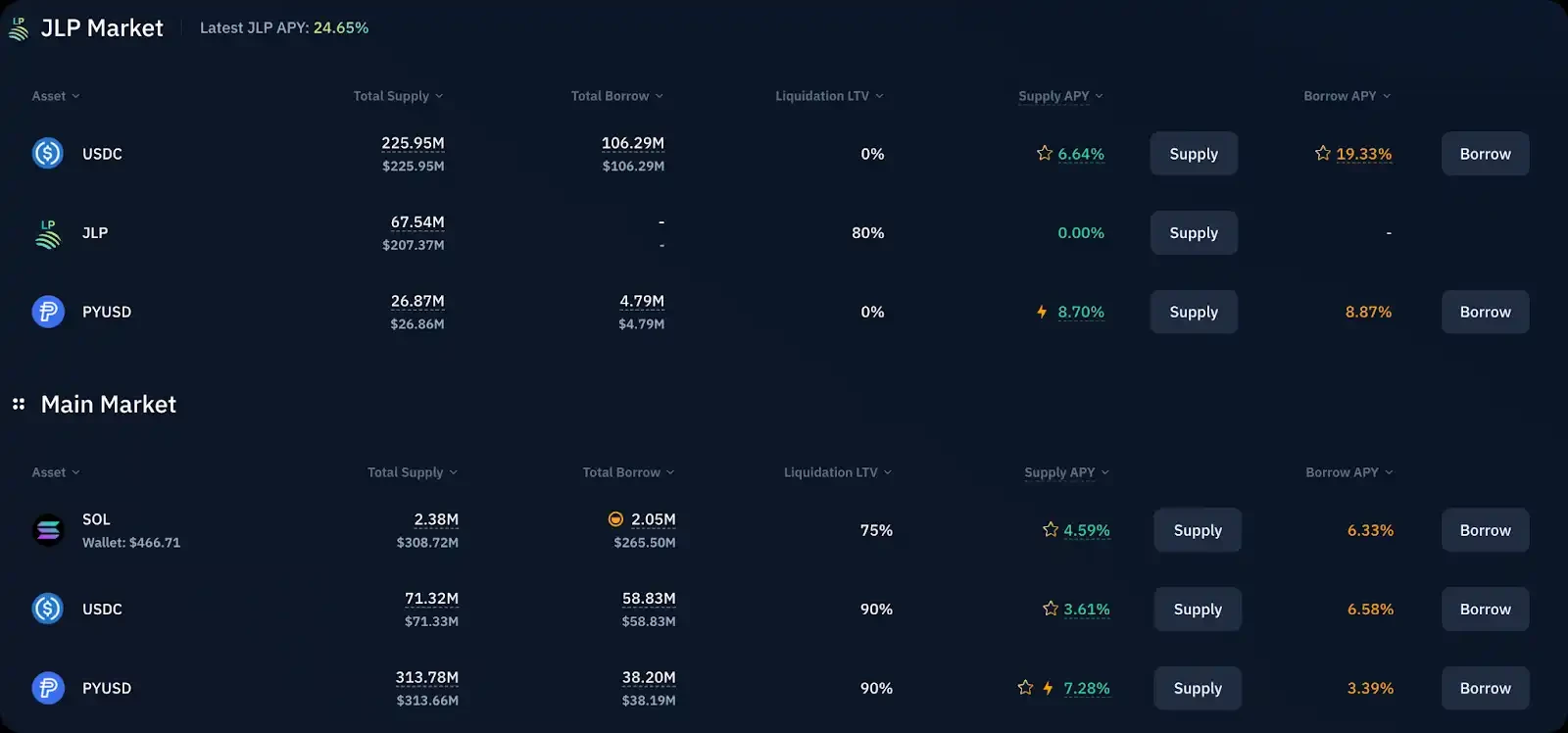
Drift
The yield on Drift’s lending vault is slightly higher at around 10%, making the platform an attractive option for PYUSD. Additionally, in its insurance fund, Drift offers an annual interest rate of around 18.5%, but keep in mind that this comes with a higher risk.

Save
The yield on Save’s PYUSD main pool is currently around 12% and appears to have increased recently, while the yields on Drift and Kamino have declined. If this trend continues, Save may be the best platform for users who want to use PYUSD without taking on additional risk.
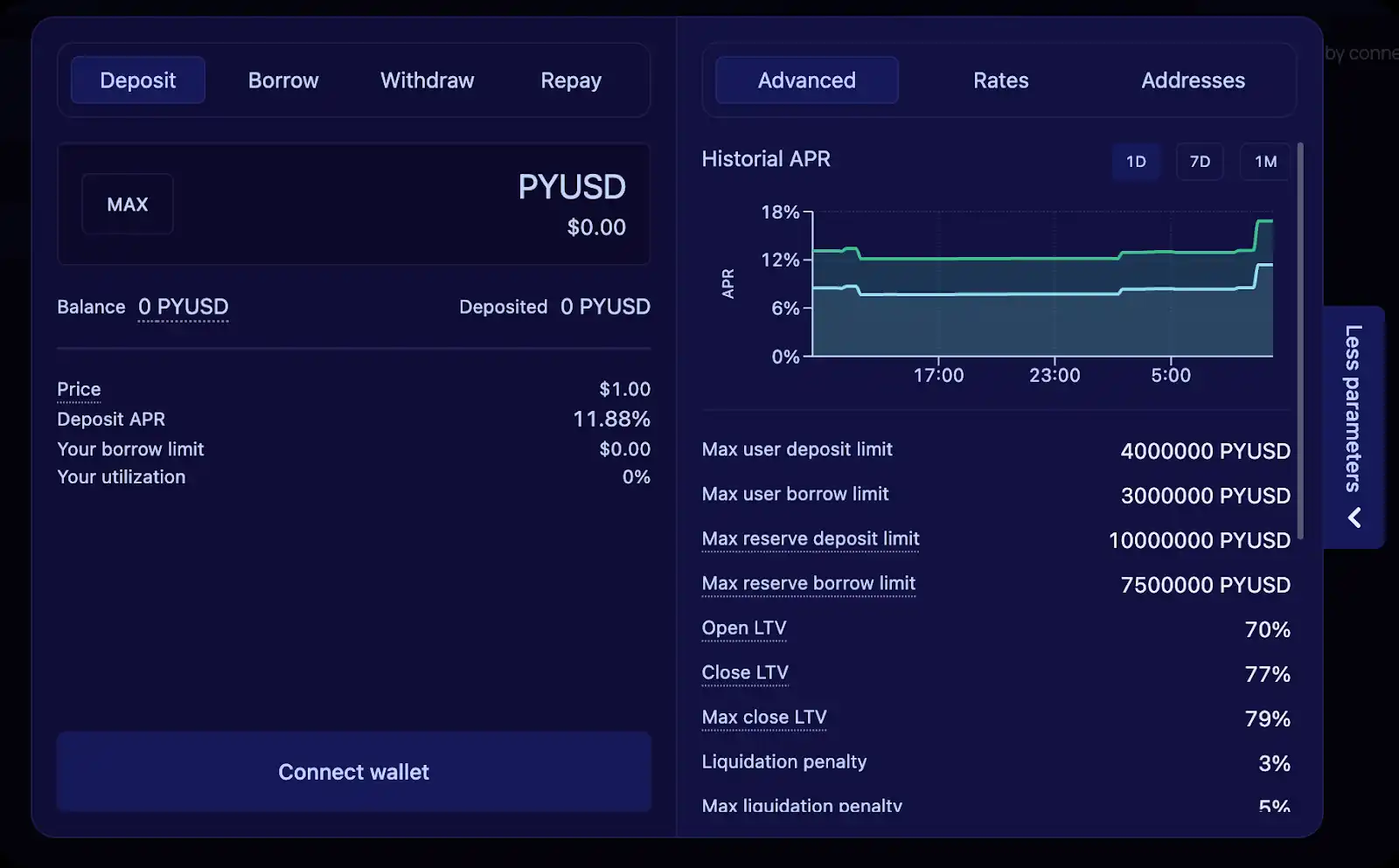
LST Yield
流動性質押 代幣s (LSTs) are an important part of Solana’s staking economy, allowing users to stake SOL while retaining liquidity for use in the broader DeFi ecosystem. The three largest LSTs on Solana by market cap — JitoSOL from MEV-enhanced liquidity staker Jito, mSOL from established Marinade Finance, and JupSOL from Jupiter Exchange in partnership with Sanctum — offer base yields of ~7.5%, ~8.12%, and ~8% on staking rewards, respectively, with additional opportunities to amplify these returns through DeFi, particularly on Kamino.
For each of these LSTs, additional yield can be earned through Kamino’s main treasury or leveraged strategies. The main treasury provides passive returns on top of base staking rewards, while the leveraged yield strategy offers higher returns for those willing to take on more risk.
JitoSOL
Main Treasury Income:
Kamino offers a modest yield of 0.04% on the primary vault provided by JitoSOL, adding passive income to the base staking rewards. This option is suitable for those seeking stable, low-maintenance returns.
Leverage Benefits:
For users who want to maximize returns, Kaminos leveraged yield option for JitoSOL offers higher returns, currently up to 10.5%. The strategy uses leverage to amplify returns, but if these derivative assets decouple, the risk increases compared to just holding LST.
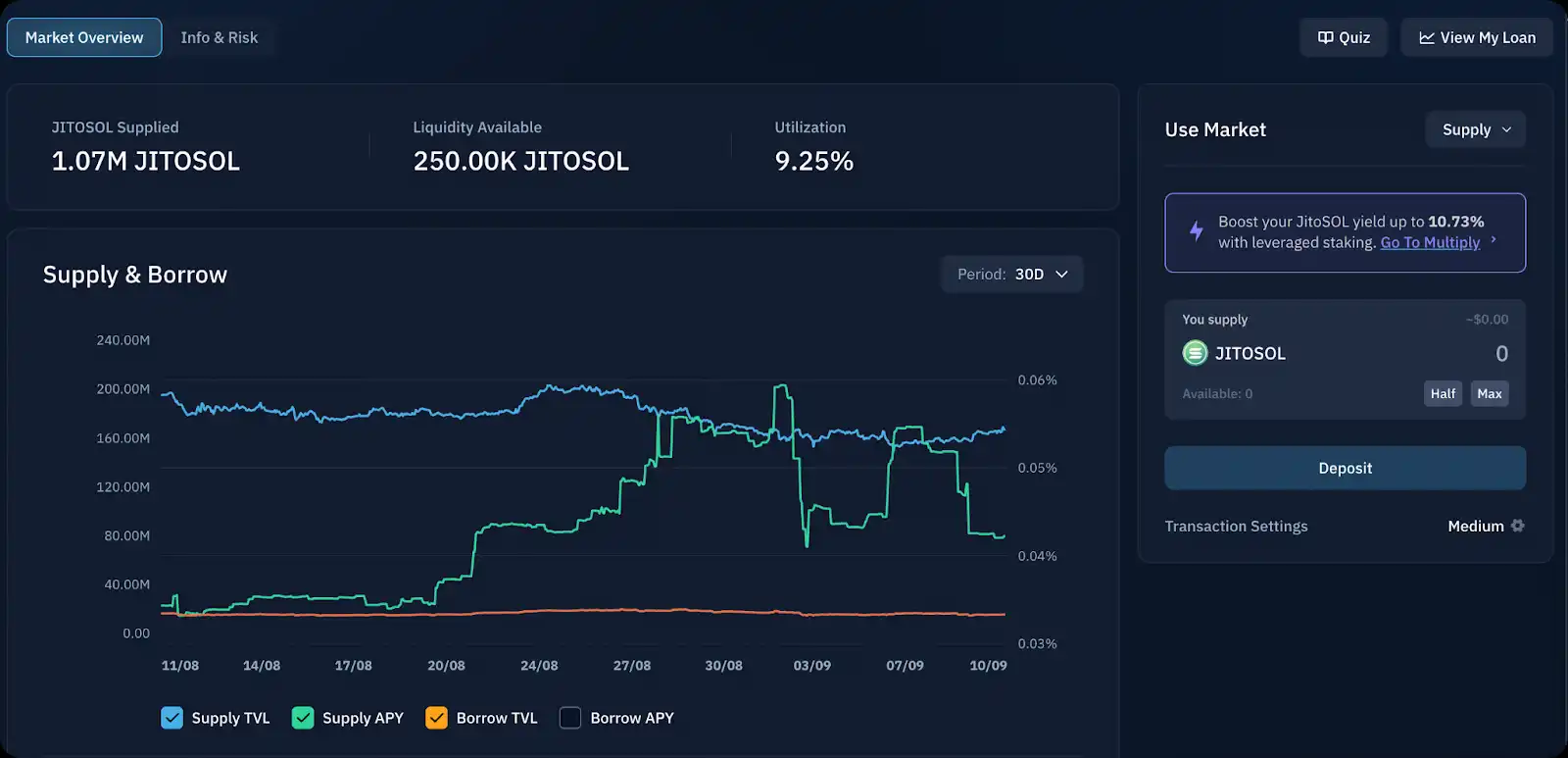
mSOL
Main Treasury Income:
Kamino’s mSOL Main Vault offers a yield of 0.11%, slightly enhancing the base staking rewards with passive DeFi returns. This vault is perfect for earning extra income while holding mSOL for the long term.
Leverage Benefits:
For those who are not afraid of risk and want to increase returns, Kamino’s leveraged staking strategy for mSOL can push yields up to around 14.5%.
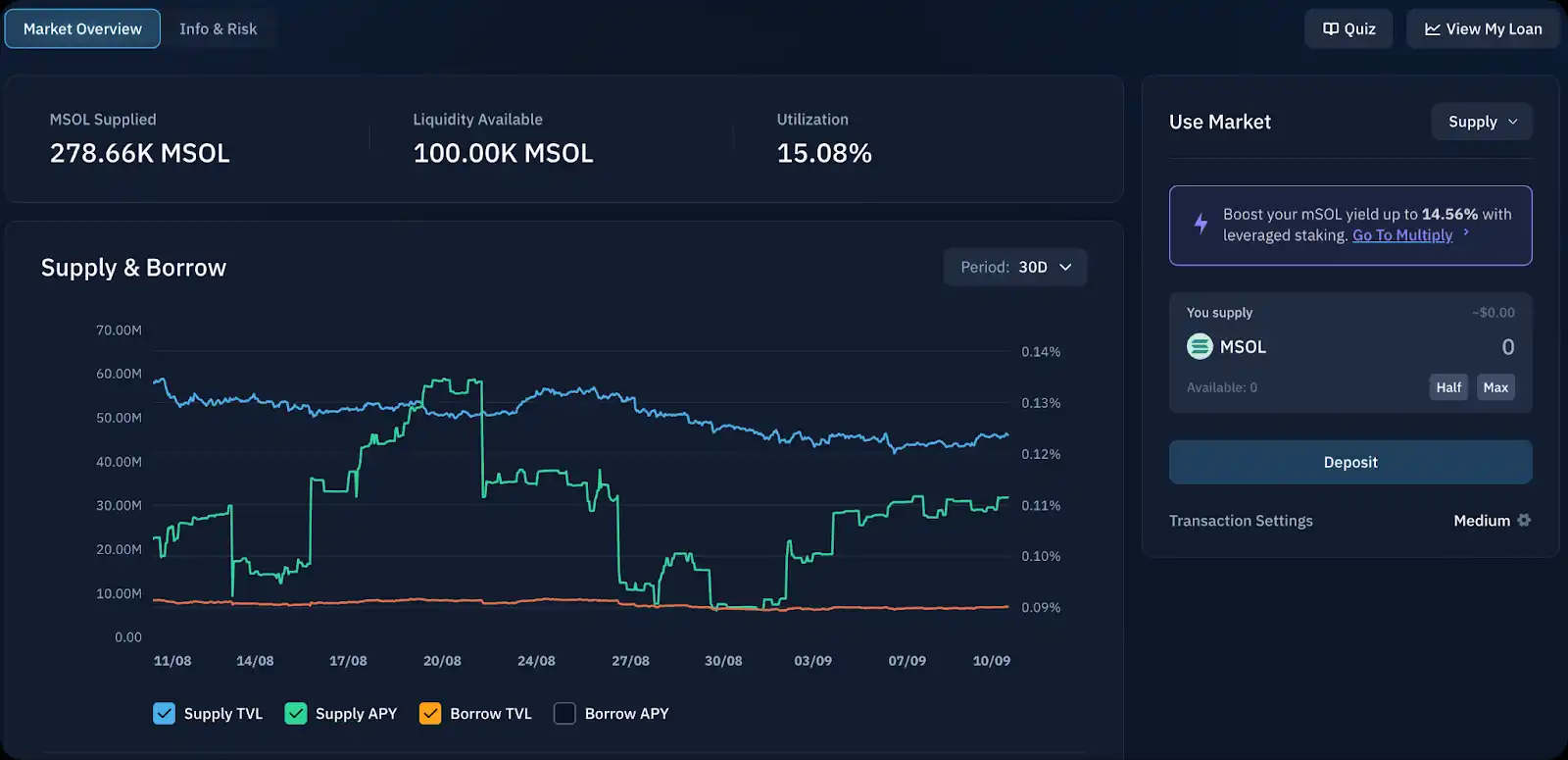
JupSOL
Main Treasury Income:
JupSOL’s main treasury in Kamino yields 0.02%, providing a small additional return on top of the base staking rewards. While the yield is low, it provides a steady source of passive income for JupSOL holders who want peace of mind at night.
Leverage Benefits:
Kamino’s leveraged JupSOL pool has the highest yield, at about 14.7%. By leveraging staked JupSOL in DeFi, users can earn substantial returns, and this strategy is ideal for those who want to maximize staking returns while taking on higher risks.
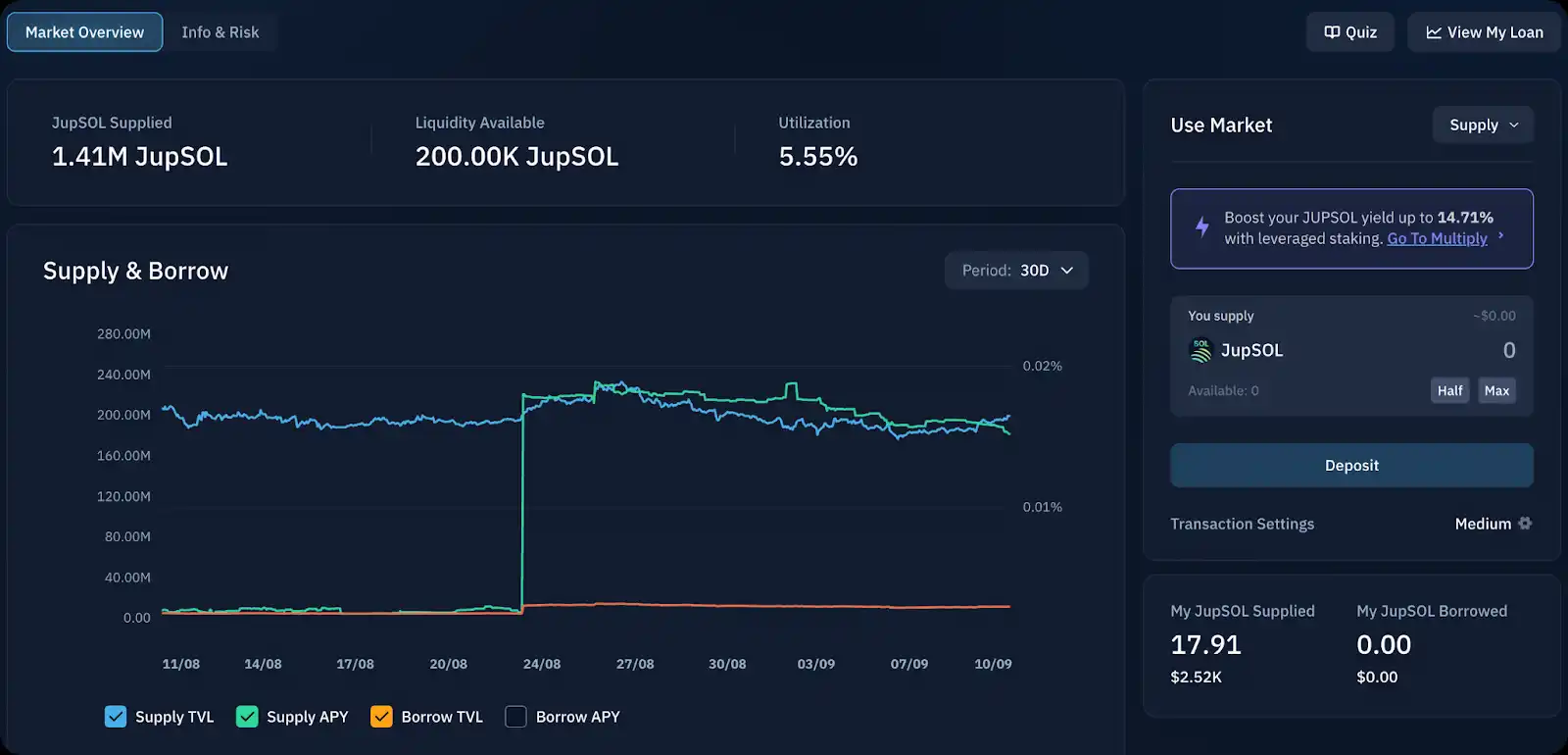
總結
In summary, stablecoins and LST on Solana offer a variety of yield farming opportunities, allowing users to grow the most mature or stable assets depending on their risk tolerance.
PYUSD 目前提供穩定幣中最高的收益機會,尤其是在 Drift 等平台上,APY 高達 18% 左右。在流動性質押方面,JupSOL和mSOL目前槓桿收益率最高,約為15%,為那些願意承擔槓桿策略風險的人提供了誘人的回報。但是,請務必監控這些金庫,因為它們的收益率會定期波動。
Whether you choose a lower-risk stablecoin vault or a higher-risk LST farming strategy, there are plenty of opportunities to put your assets to work in Solana’s DeFi ecosystem.
This article is sourced from the internet: DeFi Gold Rush: High-yield opportunities worth watching on Solana
Related: Sonys Layer2 Soneium strategy: Focusing on Web3 security challenges
This article Hash (SHA 1): de66fb2e3fc9e8fb4ff90df90cfba0dc540cdc77 No.: PandaLY Security Knowledge No.026 In todays era of rapid technological development, blockchain technology, with its unique advantages such as decentralization and immutability, is gradually becoming the focus of attention in various industries. The entry of Sony, a Japanese entertainment and electronics giant, has brought new vitality and opportunities to the blockchain field. Sony announced the launch of its own L2, Soneium. This major move has undoubtedly set off a wave in the blockchain world, and has also triggered widespread attention and discussion in the market about its security and future development direction. 1. Sony’s development history in blockchain Sonys exploration in the blockchain field did not happen overnight. As early as 2023, Sony acquired the Whalefin exchange, laying the foundation for its layout…







